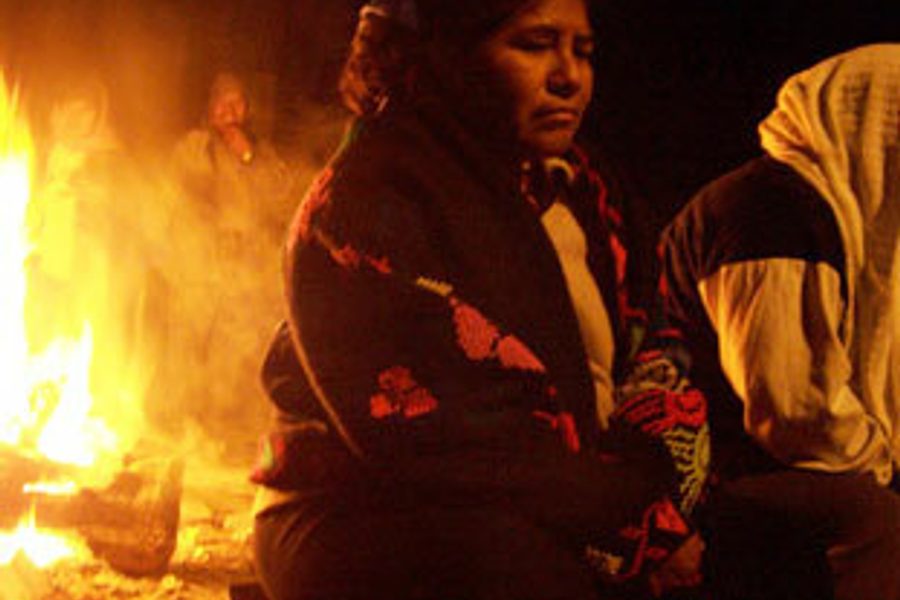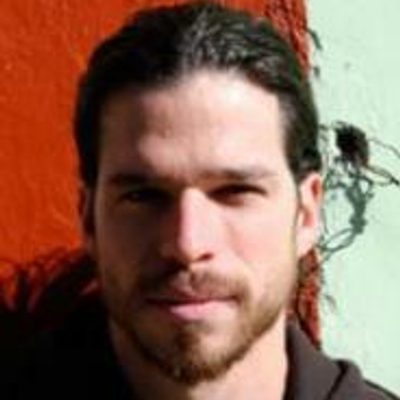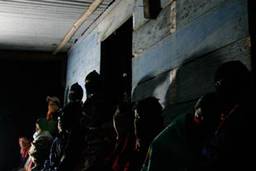Oaxaca in Crisis
Just as the teacher’s strike in Oaxaca appeared ready to end, paramilitary violence breaks out.
John Gibler

It appeared as if the conflict in Oaxaca would come to an anti-climactic end. After a week of heated internal debate, on Thursday, Oct. 26, the Oaxaca local Section 22 of the National Union of Education Workers voted to end their five-month strike and return to classes the following Monday. ( See “Teacher Rebellion in Oaxaca,” August 21)
With the teachers committed to head back to their communities, the protesters’ camps in the town square and surrounding government buildings would have thinned dramatically. Many of the farmers and indigenous organizations that make up the Oaxaca People’s Popular Assembly (APPO) were discussing ways to continue their struggle without trying to hold the camps against an imminent police attack. Without the teachers, they said, they simply would not have enough people to guarantee their security.
One might have imagined that by Monday morning, Governor Ulises Ruiz Ortiz would be walking into the town center, guarded by state police while proclaiming victory.
But the APPO was still holding on, and many of the teachers who had voted to continue the strike were considering dissenting from the majority vote and remaining in the protest camps.
Then, on Friday, Oct. 27, plainclothes police officers and city counsel members from Santa Lucia, a suburb of Oaxaca City, stepped into the street and opened fire on protesters guarding their barricades. The protesters dove out of the way, but the reporter who was standing behind them, filming the confrontation, did not see the gunmen. A split second later, two bullets tore into the chest and abdomen of New York Indymedia journalist Brad Will. After filming more than a month of interviews with the rank-and-file of the teachers’ union and the APPO, Brad Will recorded his own assassination at the hands of paramilitary gunmen.
Throughout the day, more than 15 shootouts occurred in different parts of Oaxaca City and its surrounding suburbs. In most cases, plainclothes police and gangs linked to the Institutional Revolutionary Party (PRI) fired on unarmed protesters with handguns and assault rifles. In some cases, members of the APPO fired back with handguns, though they mostly defended themselves with rocks, bottle rockets and Molotov cocktails. By the end of the day, the paramilitaries had killed 3 people and wounded 23. No deaths or injuries were reported from the APPO’s defense.
Within hours of Brad Will’s death, President Vicente Fox ordered the Federal Preventive Police (PFP) – a militarized, anti-riot force – to move into Oaxaca. Throughout Saturday, Oct. 28, plane after plane landed at the Oaxaca City airport, dispatching the police, their trucks and anti-riot tanks. The long dreaded face off between the APPO and the federal police was at hand.
But on Sunday morning, the APPO called for protesters to maintain their barricades until the federal police approached, then to allow them to break through the barricade and march ahead of them until the next one, growing in numbers at every barricade and marching ahead of the police all the way to the town square.
Thousands of people took to the streets, reinforcing existing barricades and building hundreds more. On the federal highway leading into Oaxaca City, federal police formed a line with their riot shields, shutting off the highway. Behind the line, riots tanks pulled up, police readied their teargas launchers and machine guns, and helicopters flew overhead, occasionally landing and taking off again.
Hundreds of protesters from the APPO and surrounding neighborhoods gathered less than 15 feet from the police line. About 50 women moved forward to form the protesters’ frontline, holding flowers and images of the Virgin of Guadalupe out to the police. For hours the protesters shouted, chanted, pleaded and even joked with the police, invoking their conscience and calling out for them not to repress the people of Oaxaca.
When the tanks ignited their engines and the police began to ram batons against riot shields, signaling their first attempt to move forward, men and women pushed against the tanks’ bulldozer blades and threw their bodies down on the street. The police sounded their sirens and soon fired their water canons to push protesters back. After a short and tense attempt to impede the police advance, protesters turned around and began to march ahead of the police.
The police also advanced directly from the airport, arriving in the city center by early afternoon, and blocking two streets leading into the town square. Protesters gathered at the police lines chanting and calling out to the police. Some protesters attempted to throw rocks and Molotov cocktails at the police, but the crowd called for them not to provoke the police and incite a clash. Violence broke out at the barricade set up to protect the occupied public television station, Canal 9. Police beat several protesters, and killed two.
When night fell, the protesters left the town square and the barricades to the police.
On Monday, Oct. 30, the first day of federal presence in the historic center of Oaxaca City, the sun rose to trash and piles of human waste littered throughout the police-occupied zone. All businesses remained closed, and the morning air was fetid.
But outside of the city center, thousands of people again took to the streets to build and maintain barricades and to carry out three marches that converged just two blocks from the occupied town square before turning up to the famous Santo Domingo Cathedral, where the APPO called for a new protest camp.
The show of support in the streets on Monday took many by surprise; at least 10,000 people joined the marches, and more maintained barricades throughout the city. Many believed that the PFP would either beat and arrest the majority of protesters, or scare them off the streets. But the APPO’s strategy of continuing to mobilize while avoiding direct clashes with the PFP enabled the protesters to seriously challenge the PFP’s assumed control of the city.
As the marches were gathering numbers and making their way toward the city center, protesters received news that the Mexican Congress has passed a resolution calling for Governor Ulises Ruiz to “reconsider” resigning from office, leading them to erupt in shouts: “Ulises has fallen!” Hours later, the Senate approved, unanimously, the same resolution – the first time that elected officials from Ruiz’s own PRI party publicly expressed their lack of faith in the governor’s ability to remain in office. Ruiz however, remains undaunted; he responded by submitting a complaint to the Supreme Court, alleging that Congress had acted illegally by passing the resolution.
While the presence of the PFP blocking roads and walking about in riot armor with machine guns provides a ready image of the potential for the government to resort to a violent confrontation, the possibility for continued paramilitary attacks is equally alarming. The paramilitaries killed with total impunity for months in Oaxaca before their assassination of a foreign journalist led to the current PFP intervention.
Oaxaca is still in crisis; in fact, the crisis has only deepened. While the PFP block streets, wash spray paint from the walls of town square restaurants and raid the houses of known APPO activists, those responsible for organizing paramilitary death squads remain free, and the potential for further attacks looms.
Editors’ Note: For John Gibler’s account of the events in Oaxaca before the recent spate of paramilitary violence, read “Barricade Nights in Oaxaca” in the November print edition of In These Times.








